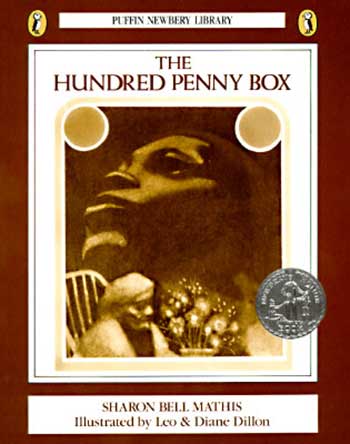 The Hundred Penny Box
The Hundred Penny Box
Sample Plan for Teaching a Story
I don't consider myself an outstanding teacher of reading, but this approach worked well in middle grades and the basic plan could be used to prepare to teach any story or chapter.
For this sample, I'll use The Hundred Penny Box by Sharon Bell Mathis. It's a great book to teach in 3rd, 4th or 5th grade.
Preparing
First, I read through the story myself, making notes of vocabulary words I think the students might not know and writing down ideas for introducing the story, questions for discussion, topics for writing assignments, and so on. I made up a planning form to fill out for each story as I read through it.
I choose no more than 20 vocabulary words to teach. Look up the particular definitions for the words that fit the context in the story. Be sure you know the correct pronunciation for each word you choose. I post the words in the classroom and prepare a study sheet to hand out the day I introduce the story.
For this particular story, I made the following notes:
- Ideas for introducing the story:
- Talk about dialect and figures of speech, "John just spit you out."
- Talk about autobiography v. biography.
- Places referenced: Atlanta, Chicago. Find these on a map.
- Time: 1874 - present. Look at the timeline in Facts Plus and note what events took place in the world during this time. Aunt Dew will refer to many of these.
- Characters: Aunt Dewbet, Michael, Ruth. Find their pictures in the book.
- Other books to show or share: Books by Sharon Bell Mathis.
- Discussion questions. For example:
- Was it right for Mama to try to get Aunt Dew to start a new life? Why or why not?
- How did each of the characters feel about the situation and what did they try to do to resolve the problems?
- Writing assignment: Students make a time line of their lives with pennies, writing one major incident for each year they have been alive on the earth. I had them find a penny from each of those years and glue it on a handout, "Magnifi-Cent Memories."
Lessons
Teach the vocabulary first. Referring to the words that are posted, I pronounce the first word correctly and have the students, en masse, pronounce it after me. Listen carefully and correct their pronunciation if necessary, then tell or show the definition, perhaps by acting it out or showing a photo or example. Ask students to make up sentences using the word. Before moving on to the next word, pronounce the word correctly again and have them say it correctly. I introduce no more than 10 words a day. A vocabulary study sheet is provided for students to take home and study.
After introducing several words, I begin review. I give a definition and see if the students can supply the word (chosen from the posted words). Once all words have been introduced, we have a short classroom drill at the beginning of each reading period until the day of the test. I read the list in order and have them repeat every word, pronounced correctly. I then give definitions, maybe acting out the word, and they provide the correct word.
Any student who uses any of the vocabulary words of the week appropriately in conversation is applauded.
Students read the story, discuss it, and do something related in the areas of writing, art or drama. In this case the assignment was Magnifi-Cent Memories. Students glue a penny with the date of each year they've been alive on the paper (heavy cover stock). Write a highlight from that year (i.e. I was born, we moved to Colorado, I broke my arm). Kids may need to ask their parents for help, especially for their baby and toddler years.
On Friday, students take a vocabulary test. Words must be spelled (copied) correctly or they're only worth half credit. This encourages diligence and care. Although this doesn't measure everything students have learned, the grades I get from this reflect each student's progress pretty accurately.
Resources for teaching The Hundred Penny Box
Go on to Creative Drama
Source: www.SusanCAnthony.com, ©Susan C. Anthony
